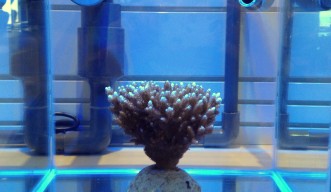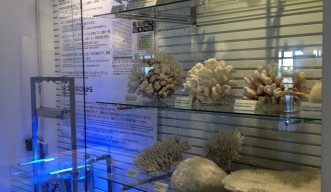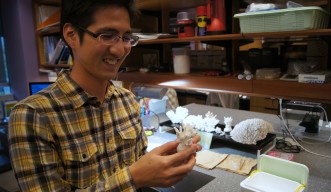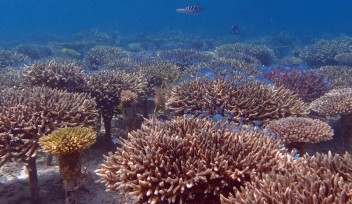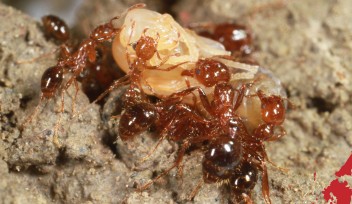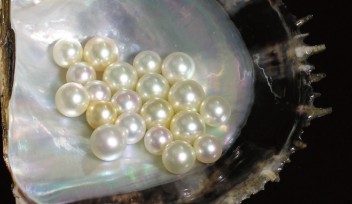Churaumi’s Coral Clone
If you are the first to discover something, that discovery can sometimes open even more doors. Behind the doors of the Churaumi Plaza at the Ocean Expo Park in Okinawa, visitors can now view a live display of the exact staghorn coral whose genome was first decoded by OIST’s Marine Genomics Unit.
The Churaumi Plaza, located next to the popular Churaumi Aquarium, boasts the first sequenced coral in the world, Acropora digitifera. This coral’s genome was initially sequenced from DNA from coral sperm during a mass-spawning event. It then developed into a larger colony of coral animals and their nutrient-producing residents, zooxanthellae, which nourish and give coral its color. At this stage OIST researcher, Chuya Shinzato, broke off a five-centimeter piece to give to the plaza as part of their coral reef exhibition. A year later the coral is now 15 centimeters across and thriving.
This method of coral propagation is akin to taking a stem cutting from a rose and placing it in the ground; that new rose grows to be genetically the same rose. Another coral along the reef, though the same species, will have a slightly different DNA code. The Ocean Expo Park realized the value of this coral, particularly in light of the bleaching threats corals face now, and lobbied hard to showcase OIST’s discovery for free. Any visitor to Okinawa’s Churaumi Plaza can see actual research used for public outreach.
“I think the coral reef in Okinawa is one of the most beautiful in the world,” says Shinzato. “It’s very important that Okinawan people understand the importance of a coral reef and our work.”
Analyzing this coral’s genetic code unveiled a few interesting surprises for the OIST researchers. Not only did they find that corals diverged from their common ancestor 250 million years earlier than believed, but they also found this species lacks a key amino acid, and relies on its colorful microscopic residents, zooxanthellae, to produce it. This dependent situation could make them more susceptible to environmental damage. They also discovered these microscopic symbionts don’t provide the sunscreen; the corals themselves do.
Shinzato now collaborates with the Okinawa Prefectural Government on a coral conservation project to investigate how the corals are connected throughout a group of local islands. “We have no idea where the Okinawan corals came from,” says Shinzato. So having a specific coral’s DNA already digitized, he says, can benefit future research on just how far these corals spread within Okinawa, and between the northern and southern hemisphere.
Shinzato explained the aquarium display is also added insurance for his research project. Currently the actual coral used for his genetic research is kept at University of the Ryukus’s Sesoko Station on Sesoko Island. If any mishaps occur, then at least a piece of his valuable research will be growing quietly in a tank close to its original ocean home.
To see the world’s first display of a genome-decoded coral please visit the Ocean Expo Park. The display is in the Churaumi Plaza where entrance is free.
Specialties
Research Unit
For press enquiries:
Press Inquiry Form










